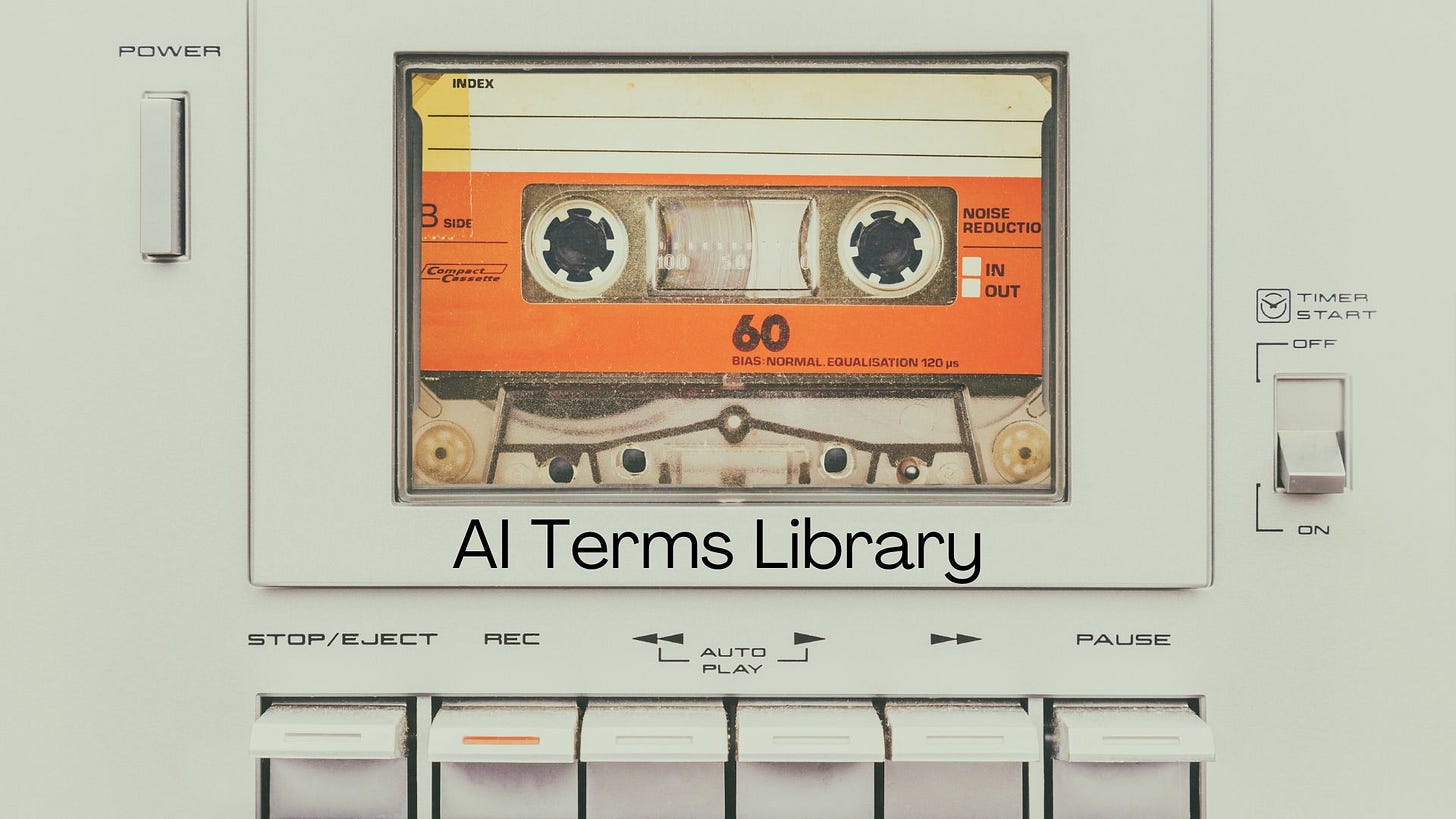AI Terms Library
The 10X Guide to Actually Understanding What Everyone’s Talking About
Cut Through the Noise
Every meeting, every deck, every pitch—someone’s tossing out AI jargon like it’s candy. “Transformer,” “RAG,” “RLHF,” “context window”—and half the room is nodding like they get it. But here’s the truth: most don’t. And that’s fine. This article is your no-BS guide to the 20 AI terms you need to understand to lead well, stay competitive, and make confident decisions.
No fluff. No techno wizardry. Just real talk from one builder to another.
The Foundation (Understand These First)
1. AI Model
Think of it like a brain. You feed it examples. It learns patterns. It gives you answers. That’s the core of every AI tool you use today.
2. Large Language Model (LLM)
These are the chatbots—like ChatGPT and Claude—that read and write like a human. Most are now “multimodal” (they handle images, voice, etc.).
3. Transformer
The reason AI got smart fast. Transformers let models “see” all the words in a sentence at once, like scanning a whole paragraph instantly instead of word-by-word.
How AI Learns (So You Can Build With It)
4. Training / Pre-Training
The model consumes massive amounts of data—text, books, websites—and learns to predict the next word. That’s how it builds its “understanding.”
5. Supervised vs. Self-Supervised Learning
• Supervised: Humans label the data (e.g., “this is spam”).
• Self-Supervised: The model learns by hiding words and then guessing them. Most LLMs use this.
6. Unsupervised Learning
The model explores unlabeled data and finds patterns. Useful for clustering, topic modeling, and anomaly detection.
Fine-Tuning and Aligning AI (What Makes AI Useful)
7. Fine-Tuning
After the big model is trained, you can specialize it for a job (like customer service or medical support) by feeding it domain-specific data.
8. Reinforcement Learning from Human Feedback (RLHF)
Humans rate answers → model learns what humans prefer → gets better at giving aligned, helpful responses. This is how ChatGPT got “polite.”
Using the Model (What Happens at Runtime)
9. Inference
When you type a prompt and get a reply? That’s inference. The model is “running.”
10. Prompt Engineering
The art of asking better questions.
• Conversational prompts: You asking ChatGPT.
• System prompts: Developers giving behind-the-scenes instructions.
11. Retrieval-Augmented Generation (RAG)
Gives models access to external information (such as your company’s documents or knowledge base). Think “open-book test” for AI.
Building With AI (Where It’s Going)
12. Model Context Protocol (MCP)
An open standard that enables models to perform tasks, such as booking meetings, updating Salesforce, or sending a Slack message. Game changer for tool integrations.
Recap & Framework for Product Leaders
Let’s simplify:
Model: The brain that powers AI.
LLM: Your text-savvy assistant.
Transformer: What made AI actually work.
Pre-training: General knowledge.
Fine-tuning: Specialization.
“RLHF": Human alignment.
Prompt Engineering: User interface for AI.
RAG: Gives the model context it wasn’t trained on.
MCP: Connects AI to real tools.
Inference: When the model actually runs.
Don’t Get Blinded by the Buzzwords
The future isn’t about sounding smart—it’s about leading with clarity. You don’t need a PhD in machine learning. But if you’re building software, leading teams, or making tech bets, you need to actually understand what’s happening behind the curtain.
When you understand the terms, you can:
• Make sharper investment calls.
• Ask better product questions.
• Call BS when someone’s trying to sell hype instead of substance.
Lead with confidence in a world where AI isn’t going away.
Stay sharp. Build well. Think 10X.



